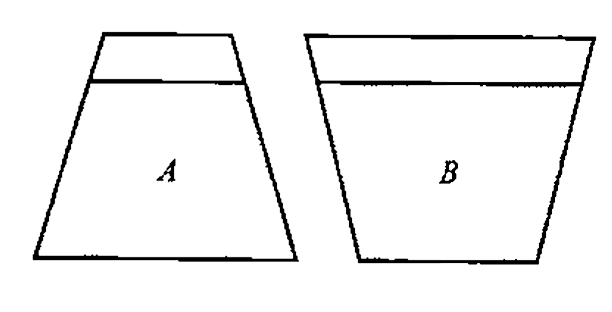A glass vessel contains air at 60∘C. To what temperature must it be heated to expel one third of the air, the pressure . remaining constant. (Neglect the expansion of the vessel)
127∘C
226.5∘C
327∘C
427∘C
The correct Answer is:B
Similar Questions
An open flask contains air at 27°C.To what temperature it must be heated to expel one-fourth of the air?
View SolutionAn open vessel contains air at 27∘C. To what temperature should the vessel be heated so that the number of molecules in the vessel decreases by 25% ? (Neglect the expansion of the container).
View Solution
Knowledge Check
An open flask contains air at 27°C.To what temperature it must be heated to expel one-fourth of the air?
A225 KB65°CC927°CD460°CAn open flask contains air at 27∘C, calculate the temperature to which it should be heated such that one third of air measured at final temperature escapes out.
A81∘CB127∘CC177∘CD227∘CA vessel with open mouth contains air at 60∘C. When the vessel is heated upto temperature T, one fourth of the air goes out. The value of T is
A80∘CB171∘CC333∘CD444∘C
A glass bulb 30∘C contains air at atmospheric pressure. If the bulb can withstand a pressure of 2 atm find the temperature at which it will burst? Neglect the expansion of the vessel.
View SolutionA glass bulb can withstand a pressure of 2 atm. It constains air at a temperature of 303 K and at one atmospheric pressure. What is the temperature at which the bulb bursts ? (Neglect the expansion of the bulb) γ=1.4
View SolutionAn open vessel at 27C is heated to 127C. The fraction of mass of air that will escape from vessel is (Neglect expansion of vessel)
View SolutionAn open vessel at 27oC is heated to 127oC. The fraction of mass of air that will escape from vessel is (Neglect expansion of vessel)
View SolutionTwo vessels A and B of cross sections as shown contain a liquid up to the same height. As the temperature rises, the liquid pressure at the bottom (neglecting expansion of the vessels ) will :

View Solution
